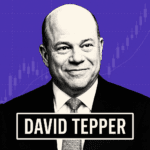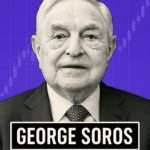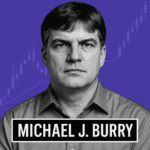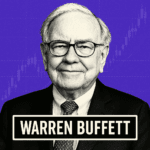WARREN BUFFETT
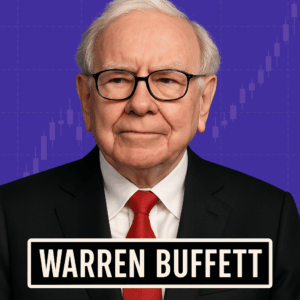
Think and Invest Like Warren Buffett
Warren Buffett, known as the Oracle of Omaha, is one of the most successful investors of all time. With his unparalleled wisdom, he has transformed Berkshire Hathaway into a multi-billion-dollar conglomerate, becoming a legend in the world of investing. But what makes Buffett's approach so effective? His philosophy is built on simplicity, patience, and discipline. Let's explore how you can think and invest like Warren Buffett, using his 15 most famous quotes as guiding principles, and examining real-life examples from his investments and holdings.
The cornerstone of Buffett's strategy is capital preservation. Unlike high-risk traders, Buffett avoids unnecessary risks by thoroughly researching and investing in businesses with strong fundamentals. His focus is on minimizing losses, knowing that recovering from losses requires even greater returns.
During the 2008 financial crisis, Buffett invested $5 billion in Goldman Sachs, securing preferred shares with a 10% dividend and warrants to buy common stock at a fixed price. This low-risk, high-reward structure protected his capital while ensuring substantial gains as the economy recovered.
Buffett emphasizes the importance of distinguishing between price and value. He seeks undervalued companies with solid earnings potential and durable competitive advantages. To think like Buffett, evaluate a company's intrinsic value and ensure you're getting more than what you're paying for.
Buffett's investment in American Express during the 1960s is a classic value play. Amid the "Salad Oil Scandal," the stock plummeted, but Buffett recognized the enduring value of its brand and customer loyalty. He invested heavily, and American Express went on to become one of his most profitable holdings.
Quality trumps price. Buffett prefers investing in great companies with sustainable business models, even if it means paying a little more. The idea is to prioritize long-term growth over short-term bargains.
His investment in Apple Inc. demonstrates this principle. Although Apple wasn't a typical value stock, Buffett recognized its strong brand, loyal customer base, and innovative ecosystem. He started buying shares in 2016, and today, Apple is Berkshire Hathaway's largest holding, contributing significantly to its market value.
Buffett is known for his buy-and-hold strategy. He invests in businesses he believes will grow over decades, resisting the temptation to sell during market fluctuations. Long-term commitment allows the power of compounding to work its magic.
Coca-Cola is a prime example. Buffett began buying Coca-Cola shares in 1988 after the market crash, seeing its global brand power and consistent earnings. Over three decades later, Berkshire Hathaway still holds this stock, benefiting from its steady dividends and capital appreciation.
Buffett believes patience is a virtue in investing. Avoid frequent trading and speculation. By staying invested in high-quality companies, you can weather short-term volatility and benefit from long-term growth.
In 2011, Buffett invested in Bank of America when it was facing legal and financial troubles. He acquired preferred shares with a 6% dividend and warrants to buy common stock at $7.14. By holding patiently, Buffett exercised the warrants in 2017, turning a $5 billion investment into over $20 billion, illustrating his faith in long-term value.
For Buffett, knowledge is the ultimate risk management tool. He only invests in industries he understands, known as his "circle of competence." To emulate this, focus on sectors where you have knowledge and avoid investments you don't fully grasp.
Buffett avoids technology companies he doesn't understand but made an exception with Apple because he saw it as a consumer products company rather than a tech firm. His understanding of brand loyalty and consumer behavior guided his investment decision.
Buffett avoids complex businesses he cannot predict. He sticks to simple, proven business models. Investors should aim for clarity and avoid trendy sectors they don't fully comprehend.
Buffett famously avoided investing in the dot-com bubble of the late 1990s, as he didn't understand the technology business models. His decision saved Berkshire Hathaway from the catastrophic losses that many tech investors faced during the burst.
This highlights the power of compounding. Buffett started investing at 11 and advocates for early and consistent investing. The sooner you start, the more time your investments have to grow exponentially.
Buffett's early investment in Washington Post in 1973 illustrates this. He bought $10 million worth of shares when the company was undervalued. By the time Berkshire exited the investment in 2014, it was worth over $1 billion, a testament to the power of compounding over decades.
Buffett argues that emotional stability and discipline are more crucial than IQ. The ability to stay calm and rational during market volatility is what separates great investors from the rest.
During the 2008 financial crisis, while others were panicking, Buffett made strategic investments in Goldman Sachs and General Electric, showing his calmness and confidence in the economy's long-term recovery.
Buffett capitalizes on market irrationality. During downturns, he buys high-quality stocks at discounted prices, while others panic.
In 2020, during the COVID-19 market crash, Buffett increased Berkshire's stake in Bank of America, betting on its strong balance sheet and digital banking strategy.
This philosophy reflects Buffett's confidence in his investments. He chooses companies with durable competitive advantages, ensuring they can thrive regardless of market conditions.
His long-term investment in Coca-Cola and American Express shows his belief in their brand power and consistent earnings, even through economic downturns.
Applying Buffett's Wisdom in Your Investment Strategy
To think and invest like Warren Buffett, you need to:
- Focus on Value: Buy undervalued stocks with strong intrinsic value.
- Be Patient: Adopt a long-term perspective and resist impulsive trading.
- Stick to Your Circle of Competence: Invest in businesses you understand.
- Maintain Emotional Discipline: Stay calm during market fluctuations.
- Keep Learning: Continuously enhance your knowledge and decision-making skills.
Warren Edward Buffett, born on August 30, 1930, in Omaha, Nebraska, is an American investor, business tycoon, and philanthropist. Known as the "Oracle of Omaha," Buffett is widely regarded as one of the most successful investors of the 20th and 21st centuries. His journey from a young entrepreneur to the chairman and CEO of Berkshire Hathaway is marked by strategic investments, adherence to value investing principles, and a commitment to philanthropy. Below is a detailed timeline of his life, career developments, and investment strategies.
Early Life and Education
Early Career
Formation and Expansion of Berkshire Hathaway
Investment Strategies and Key Investments
Philanthropy
Recent Developments
Warren Buffett's career demonstrates a consistent adherence to value investing principles, strategic acquisitions, and impactful philanthropy, cementing his legacy as one of the greatest investors in history.

